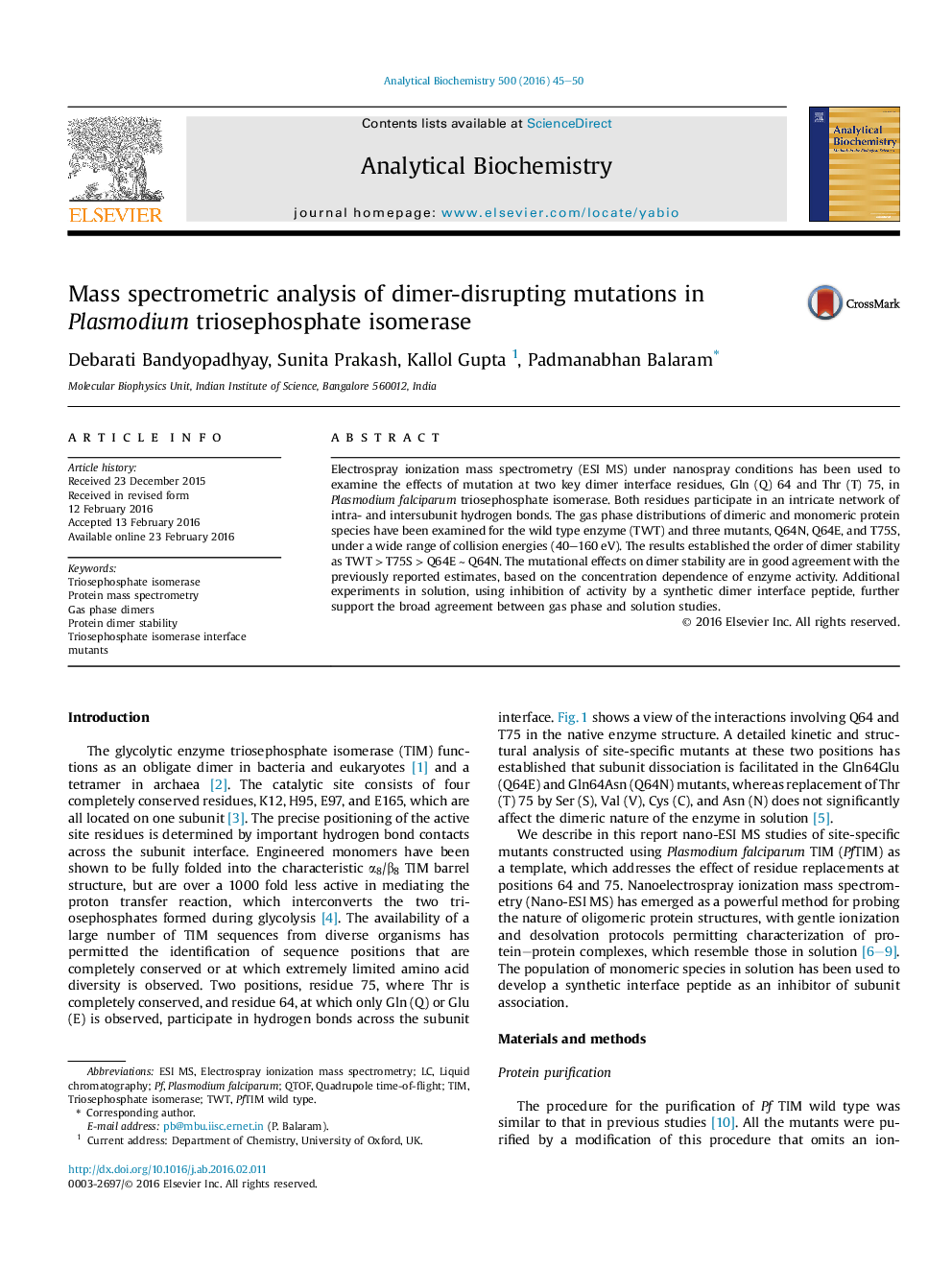| Article ID | Journal | Published Year | Pages | File Type |
|---|---|---|---|---|
| 1172887 | Analytical Biochemistry | 2016 | 6 Pages |
•Nano-ESI MS studies enable characterization of relative dimer stabilities of TIM mutants.•Mutations at positions 64 and 75 destabilize the dimeric structure.•The order of gas-phase stabilities is Wild Type > T75S > Q64E ∼ Q64N•Enzymatic activity of Q64N/E mutants is inhibited by a synthetic dimer interface peptide.•Inhibitory effects of an interface peptide on enzyme activity was more in case of Q64 mutants.
Electrospray ionization mass spectrometry (ESI MS) under nanospray conditions has been used to examine the effects of mutation at two key dimer interface residues, Gln (Q) 64 and Thr (T) 75, in Plasmodium falciparum triosephosphate isomerase. Both residues participate in an intricate network of intra- and intersubunit hydrogen bonds. The gas phase distributions of dimeric and monomeric protein species have been examined for the wild type enzyme (TWT) and three mutants, Q64N, Q64E, and T75S, under a wide range of collision energies (40–160 eV). The results established the order of dimer stability as TWT > T75S > Q64E ∼ Q64N. The mutational effects on dimer stability are in good agreement with the previously reported estimates, based on the concentration dependence of enzyme activity. Additional experiments in solution, using inhibition of activity by a synthetic dimer interface peptide, further support the broad agreement between gas phase and solution studies.
Graphical abstractFigure optionsDownload full-size imageDownload as PowerPoint slide
